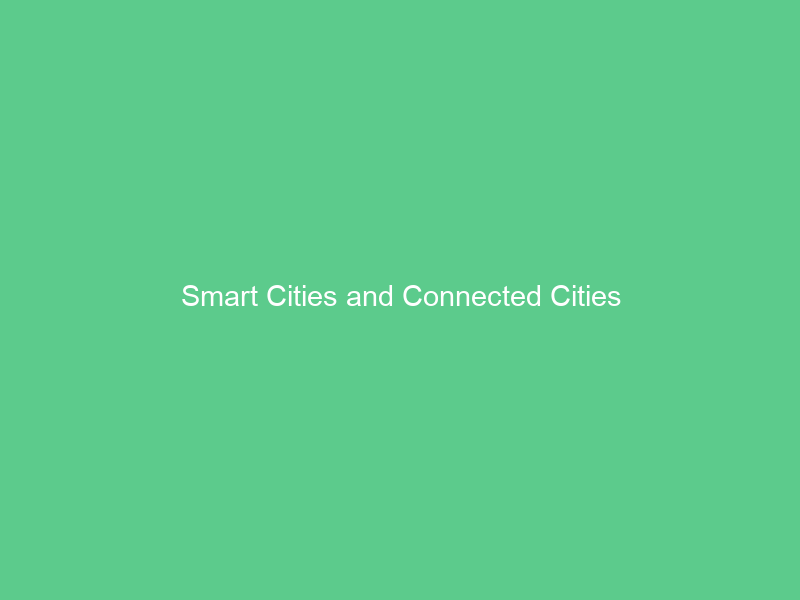Smart cities use technology to transform environmental, social and financial aspects of urban life through data-driven decision making and streamlining factors like public transport, energy distribution, waste management and citizen engagement.
Amsterdam boasts motion-detected streetlights to help guide drivers to their cars while smart waste bins notify local trash services when they’re full. Meanwhile, in Kansas City residents have access to parking space details and traffic flow data via a Wi-Fi visualization app that’s freely available.
Environmental Sustainability
Many of the smart city technologies mentioned earlier are designed to reduce energy use, pollution levels, and combat climate change. Examples include building automation systems, dynamic electricity pricing and mobility applications which may help cut emissions up to 15 percent.
Effective systems require large amounts of data collected by thousands, sometimes millions, of sensors connected together and fed into the cloud. A reliable and secure system must also be in place in order to prevent hacking or misuse from taking place.
These systems must also be transparent so that residents can interact with the data and complete personal tasks like paying bills or finding efficient transportation options, without being subject to undue regulations from an outward-facing entity. This requires the creation of smart citizen portals accessible on mobile devices that make smart city technology readily available and sustainable – not causing negative environmental impact!
Energy Efficiency
Smart city technologies use internet connectivity to improve and advance urban systems such as utilities, transportation, security, waste management and energy efficiency. This is accomplished through automation and the collection of data through networked sensors.
Sensors communicate this data to a central platform that constantly tracks city performance. This platform is equipped to detect suboptimal conditions and notify appropriate city teams immediately if any become substandard.
An automated system could use water-quality monitor data to recognize dangerous chemicals that require chemical-level modification without human involvement, and then trigger changes without intervention from humans.
Other examples include using intelligent sensors to optimize building energy usage and reduce vehicle emissions. One commonly-used technology is connected, electric autonomous vehicles – commonly referred to as driverless cars – which can be “platooned” together so they move much more rapidly through smaller spaces than humans can manage, ultimately decreasing energy consumption and carbon emissions.
Public Safety
Smart cities use various technologies to address urban challenges, but all rely on having an effective network infrastructure – one which provides high-speed, low-latency connections from operational hubs outward to devices, applications and users on the edge.
Effective smart city technology demands an holistic approach that combines security, data analytics, device management and privacy concerns into one cohesive system. Since smart cities generate huge volumes of data that cannot rely on users voluntarily agreeing to terms-of-service agreements in order to access information, users must not simply check off a terms-of-service box in order to access information.
As far as public safety goes, smart city technologies provide solutions that improve situational awareness and response times for first responders while simultaneously facilitating crime-fighting solutions that lower costs and promote community engagement. Other uses for smart city technologies may include optimizing call centers, traffic signal preemption and cutting emergency service response times by up to 35 percent1. Finally, the best smart city technologies provide secure unified services which simplify complexity while decreasing hardware investment requirements and IT involvement requirements.
Mobility
Smart cities place great importance on sustainable mobility. This involves minimizing the need for physical transport of people and goods through services that reduce distance, as well as city design that minimizes physical transportation needs.
Cities can gather data from a range of sources, such as parking sensors and traffic signal preemption systems, to improve the efficiency of their transport system and optimize call centers to ensure first responders arrive quickly at emergencies locations.
Open data can help citizens select eco-friendly transportation options and access real-time schedules of public transit, while also helping reduce congestion and pollution through carpooling and ridesharing programs. Some smart city projects target improving commuter experiences while others address specific issues; these initiatives may track air quality levels or monitor noise levels or waste flow in a community; others address general matters such as social inclusion or security; many require collaboration across departments within city governments as well as outside expertise or funding sources.

